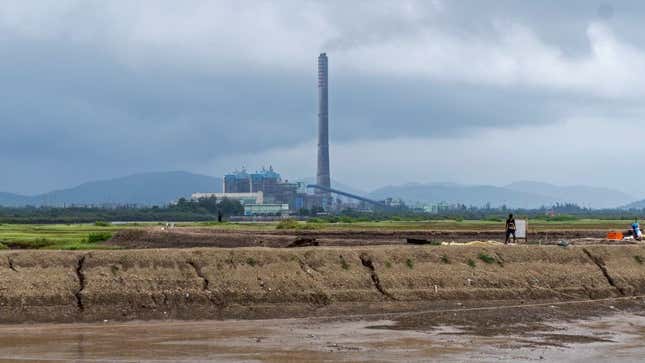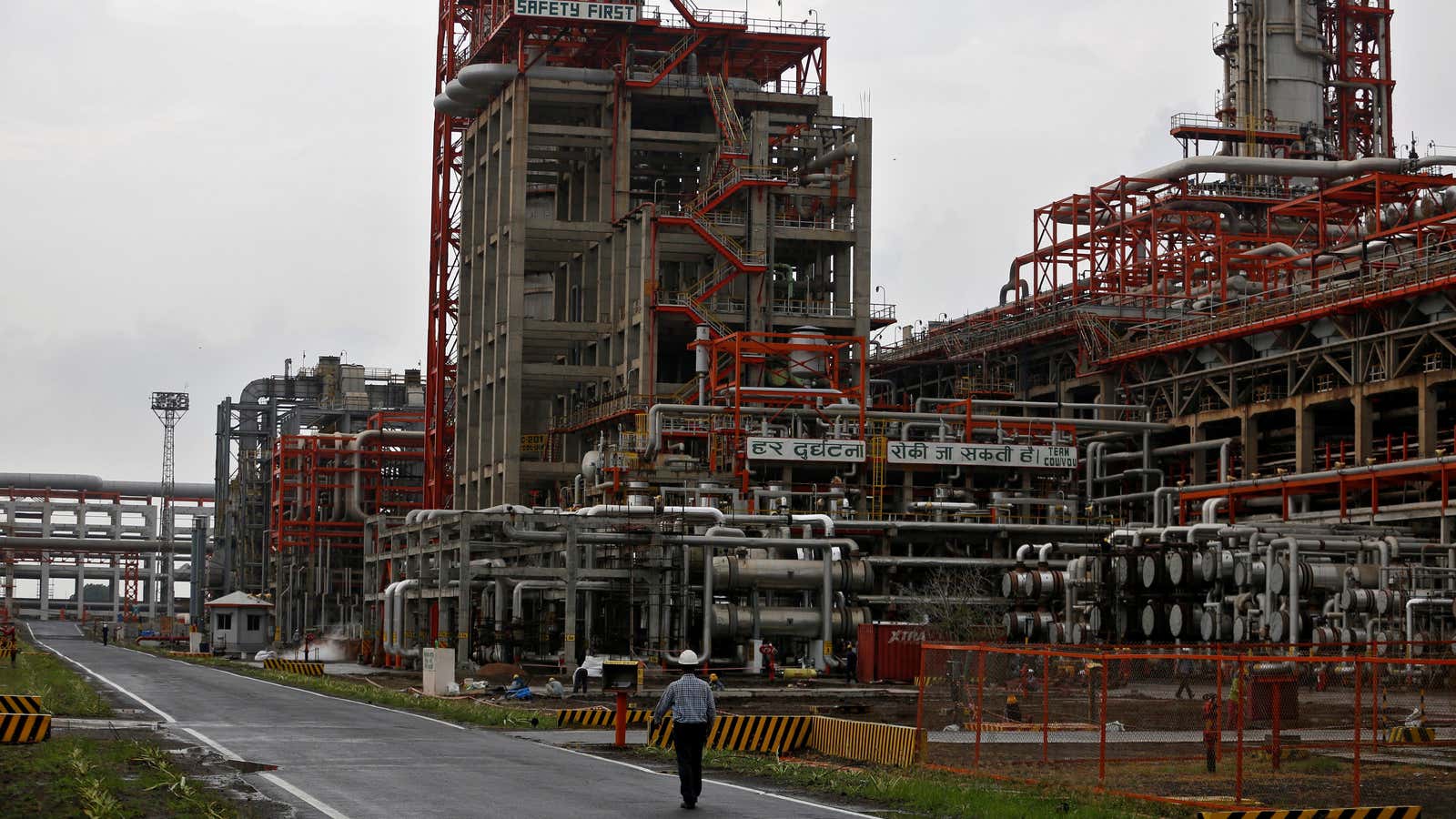While India should prioritise health and economic recovery in the aftermath of the Covid-19 crisis, there will also be an opportunity for clean energy transition as part of coping strategies and support measures, says a report which examines India’s energy policies.
Though it is yet uncertain how long the pandemic will last, the report anticipates an increased focus on economic recovery once Covid-19 is under control, which includes addressing concerns of the energy sector. The period post Covid-19 will give the Indian government a chance to reset its energy policies and increase focus on clean energy, notes the report published on April 16. If India considers economic stimulus to support energy producers it should “carefully assess” how different interventions for producers will “undermine or support the clean energy transition,” it says.
The report “Mapping India’s Energy Subsidy 2020: Fossil fuels, renewables, electric vehicles” (pdf) has been put together by two think tanks working on environmental issues—the International Institute for Sustainable Development (IISD) and the Council on Energy, Environment and Water (CEEW).
It highlighted that though the overall support for fossil fuels has been decreasing, there is still a significant gap between usage of fossil fuels and renewable energy, with the latter left to cover a lot more ground to match up to fossil fuel usage. It also revealed that subsidies for fossil fuels are still over seven times more than subsidies for alternative energy in India. “In financial year 2019, subsidies for oil, gas and coal amounted to Rs83,134 crore ($12.4 billion), compared to Rs11,604 crore for renewables and electric mobility,” said the report.
While talking about how India’s energy subsidies might change in response to the Covid-19 crisis, the report said: “it is hard to predict the full impacts of Covid-19, but it seems likely they will be significant and prolonged,” and that “clean energy transition can and should be reflected in coping strategies and support measures.”
The report stressed that there are three key implications for public resources and energy transition in India, in the post-pandemic recovery phase—a crash in world oil prices can free up revenue to help tackle the crisis by temporarily eliminating petroleum product subsidies and enabling higher tax rates, increasing demand to support energy producers, as profits fall, demand falters and perceptions of risk rise as well as increasing demand for social protection and effective and efficient public services.
“Investments in these areas can create new options to target energy access subsidies, allowing benefits to be clustered on those most in need,” said the report.
“India’s major energy subsidies amount to Rs1.74 lakh crore—higher than the initial economic package of Rs1.70 lakh crore that the government announced for tackling Covid-19. The centre needs to reassess this large subsidy outlay and rationalise it across end-consumers,” Karthik Ganesan, a research fellow at the CEEW and one of the authors of the report, told Mongabay-India.
The IISD and CEEW report examined how the Indian government has used subsidies to support different types of energy and how India’s energy subsidy policies have changed. It focused on the major developments in India’s dynamic energy policy environment over the years, public support to the country’s desired energy future, subsidies from production to consumption for coal, oil and gas, electricity transmission and distribution, renewable energy and electric vehicles.
Subsidies mix
According to the report, the oil and gas subsidies in India are up by over 65% from about Rs40,762 crore in financial year 2017 to Rs67,679 crore in financial year 2019 but that was largely driven by higher oil prices and growing use of subsidised liquefied petroleum gas (LPG).
Over the past few years, there has been an increase in the number of LPG consumers under the Pradhan Mantri Ujjwala Yojana (PMUY), which provides LPG connections to families below the poverty line.
The report also discussed the slowdown in India’s renewable sector stating that renewable energy subsidies are down by 35% but are likely to rise again. “Renewable energy subsidies fell from a high of Rs15,313 crore in financial year 2017 to only Rs9,930 crore in financial year 2019. This reflects falling renewable energy costs but also a slowdown driven by policy decisions such as the solar safeguard duty and price caps in auctions,” it said but stressed that they are expected to rise again in financial year 2020 as several new policies have been confirmed since financial year 2019.
This basically means that the recent increases in fossil fuel subsidies and decreases in renewable energy subsidies have not yet altered larger trends. Since financial year 2014, India has shifted significant public resources toward a clean energy transition.
“Other than the subsidies for providing clean cooking options for the poor, any other form of subsidy for the fossil fuel industry would only further the climate catastrophe and health impacts due to various forms of pollution (air, water, and land). Unfortunately, fossil fuels continue to enjoy a larger share of subsidies than clean energy options, this would only further challenge the achievement of our climate goals under the Paris Agreement,” said Sunil Dahiya, who is an analyst with the Centre for Research on Energy and Clean Air (CREA).
“On the other hand, the current Covid-19 crisis has shown the world what one crisis could do to health, economy and livelihood. It has also shown us the importance of investing in public health. The best investment that the governments should focus on when they revive the economy is in the clean and renewable energy sector and not to focus on fossil fuel sources which cause the most damage to public health and the climate,” said Dahiya.
The report also focuses on subsidies provided in the form of underpriced electricity and highlighted that “state-level under-priced electricity is the most costly individual subsidy policy in India estimated at Rs63,778 crore.”
“India’s energy sector is full of price distortions and on account of poor targeting of subsidies, the rich ultimately end up benefiting disproportionately. For instance, LPG consumption is concentrated more in urban areas than in rural areas, thereby serving the needs of the wealthier section. Similarly, on the electricity front, the focus of the government is only in keeping the wheels greased and not an overhaul to address the inefficiencies in the system,” said Ganesan while explaining that the subsidies provided masks losses linked to specific consumer groups.
The report stressed that the support for coal power largely remains unchanged and talks about the associated cost of the coal power. it explained that the net costs of coal are much larger than the revenues if we compare total revenues from coal taxes and total costs from coal-related subsidies, air pollution and greenhouse gas (GHG) emissions.

“Even with conservative assumptions, the outcome is a large net cost from coal. Coal subsidies are estimated at Rs15,456 crore in financial year 2019 and may increase significantly from financial year 2020, given non-compliance with deadlines to install air pollution control technology,” said the report.
“The non-economic costs of coal—air, soil and water pollution (poor ash management) are significant and over-rides any benefit of using this domestic resource. Unless we address these, the emergence of newer and cleaner options will always be inhibited,” said Ganesan.
Moving to EVs
As far as overall trends are concerned, since financial year 2014 (from the time the IISD started mapping all energy subsidies of India), fossil fuel subsidies have fallen by more than half, largely driven by falling world oil prices and policy reforms to diesel and kerosene pricing, while subsidies for renewable energy and electric vehicles (EVs) have increased over three and a half times, largely due to policy efforts to meet capacity targets. “EV subsidies, in particular, have increased over 440 times from a very low baseline in financial year 2014,” the report highlighted.
Since financial year 2017, the subsidies for EV have grown over 11 times but the report explained that it is because India has only very recently stepped up its support levels for EVs.
It said though the growth in this sector is expected to continue, policies should be monitored to ensure effective, efficient and equitable support, including for two-wheelers, public transport, waste treatment and battery recycling because “support may still not be sufficient to reach 2030 targets.”
Moving away from subsidies
According to the report though India has shown a commitment to shift to clean energy the action is still insufficient to address the scale of sustainability challenges and thus the government of India should increase the shift of public resources from fossil fuels to clean energy.
Before the 2015 Paris Climate Agreement, India had promised to unconditionally reduce the emission intensity of its GDP by 30 to 35% from 2005 level by 2030 and achieve 40% of its installed power capacity from renewables.
The Indian government had also promised 175,000 megawatts (MW) of renewable power, including 100,000 MW from solar power, by 2022. Subsequently, India has been talking about 450,000 MW of renewable power by 2030. As of Feb. 29 this year India’s total installed capacity of renewable power is 86,759.19MW and of that 34,405.67MW is from solar power.
The report, meanwhile, stressed that the government should resist demands for new oil and gas subsidies. It also emphasised that to achieve 450,000MW by 2030, the Indian government must develop “quality interstate grid transmission and storage.”
This piece was first published on Mongabay-India. We welcome your comments at [email protected].
